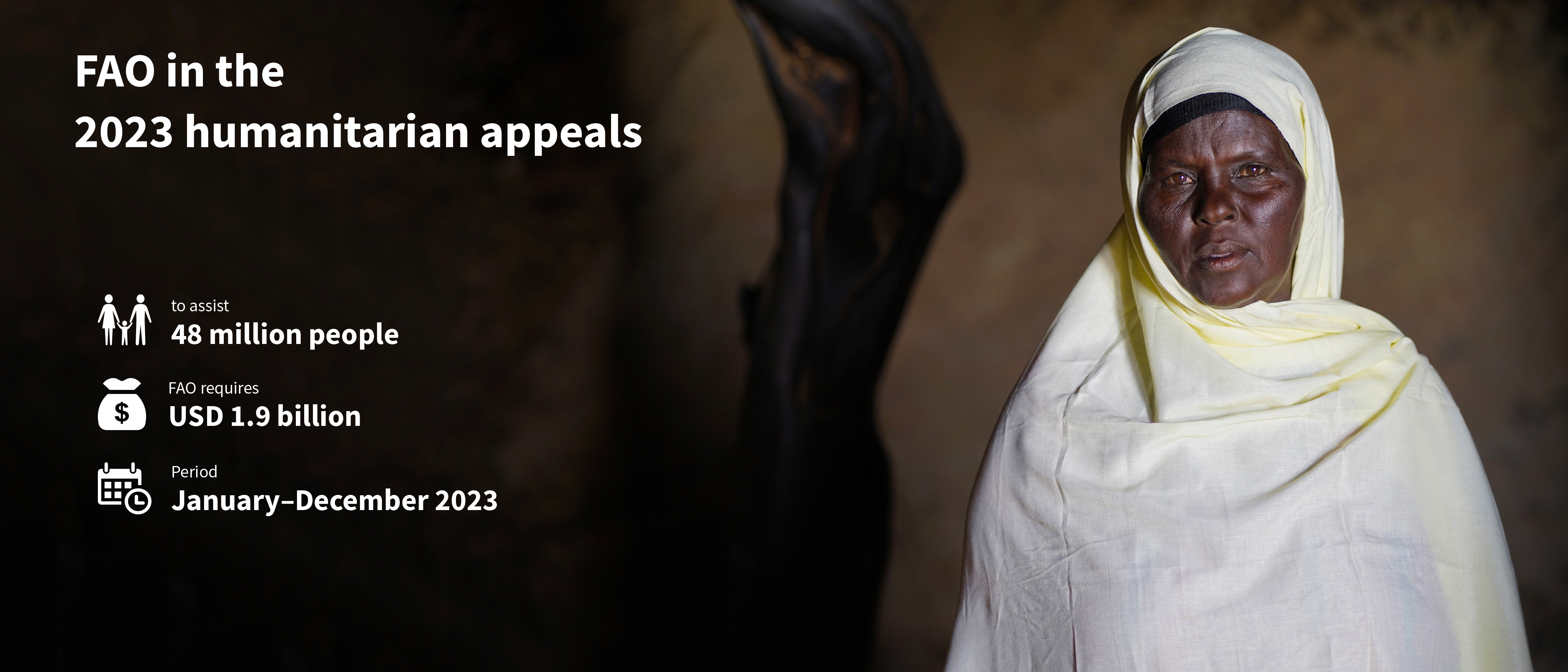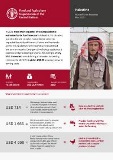
Across the world, 222 million people are experiencing high acute food insecurity, almost one in five of whom are struggling to access enough food to survive the day. They are overwhelmingly farmers, fishers, herders and foresters, whose most basic means of survival have been devastated by conflict or extreme weather (drought, floods), pests, disease or the steady disruption of economic turbulence and instability.
Agriculture aid is life-saving humanitarian aid. Urgent, time-sensitive agricultural interventions, especially when combined with cash and food assistance, have enormous impacts on food availability, nutrition and displacement, among others, significantly cutting other humanitarian costs. More importantly, such interventions are geared towards meeting the needs and priorities of affected communities – allowing them to remain in their homes where it is safe to do so, meet their own needs and lead their own future recovery.
Under the 2023 humanitarian appeals, FAO requires USD 1.9 billion to help almost 50 million people gain access to a steady supply of nutritious food, facilitate their recovery and lay the foundations for resilience to future shocks.
In depth

Pakistan: Floods response update, February 2023
03/2023
Rural communities of Pakistan were among the hardest hit by the devastating floods of June–August 2022.

Palestine: Humanitarian Response Plan 2023
05/2023
In 2023, more than a quarter of the population is estimated to be food insecure in Palestine.

Somalia: Humanitarian Response Plan 2023
05/2023
Somalia has endured poor rains since 2020, alongside exceptionally high food prices, conflict, disease outbreaks and other hardships.

South Sudan: Humanitarian Response Plan 2023
04/2023
Climate extremes, conflict and a poor economic environment continue to drive humanitarian needs in South Sudan, where over half of the population is acutely food insecure.

Syrian Arab Republic: Humanitarian Response Plan 2023
03/2023
With the conflict now in its thirteenth year, the Syrian Arab Republic continues to face insecurity, economic crisis, drought-like conditions and severe agroclimatic fluctuations.

